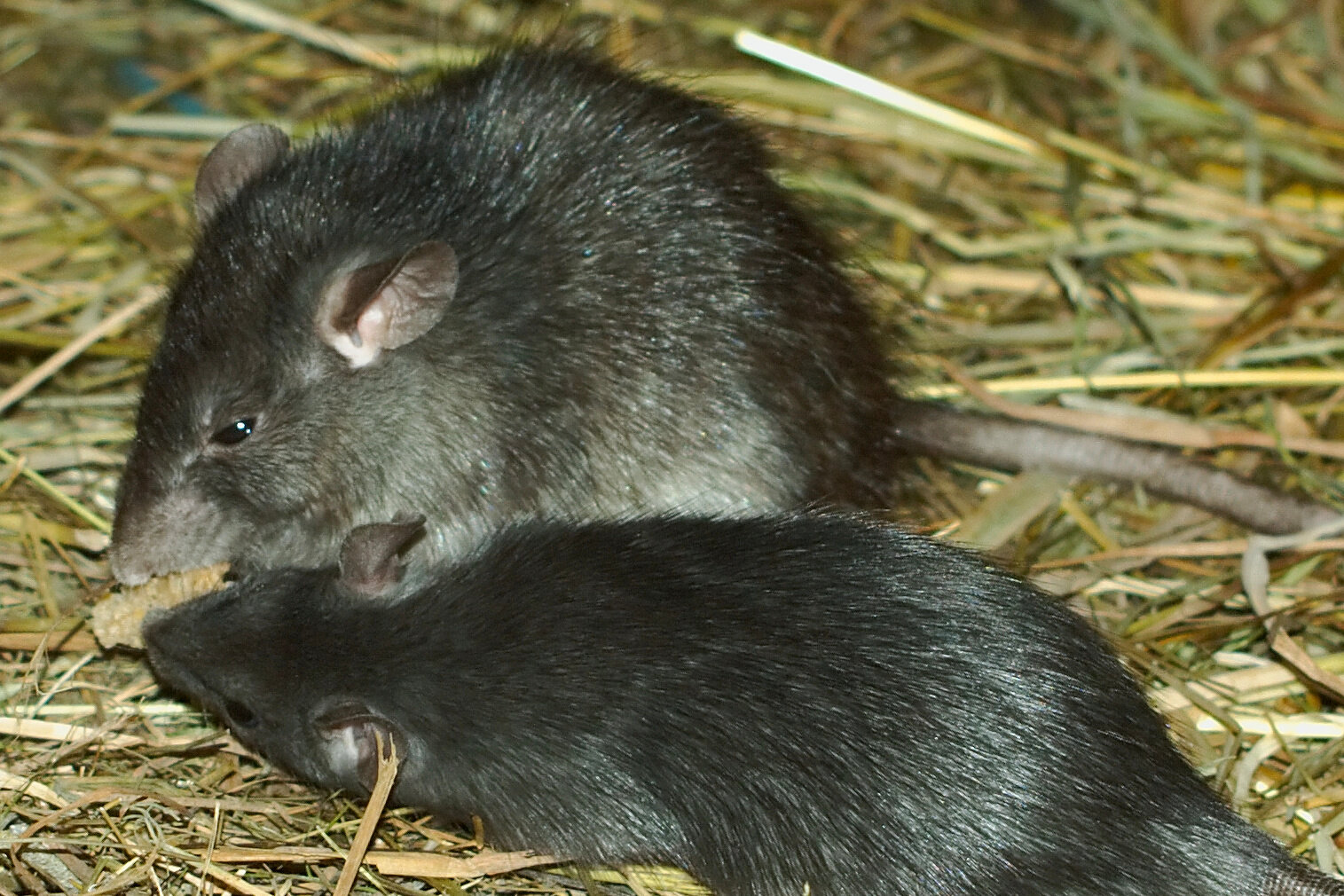Black rat, showing ‘spiky’ fur (Credit: Mark Hows)
Fact file
Latin name
Rattus rattus
Threat status
Least Concern (Global)
Least Concern (Europe)
Not Assessed in UK (UK)
Identifying features
Very easily confused with the brown rat. Despite what the names suggest, black rats are not always black, nor brown rats brown! Black rats are grey-brown to black on top, with with a pale grey to creamy belly.
Black rats have relatively longer and thinner tails, with larger ears and eyes. They also have longer guard hairs and whiskers, so they can look ‘spiky’ (see picture) against light backgrounds. Much larger than mice or voles.
Habitat
In the UK, black rats are found in two main habitats. Firstly, they are found around docks, warehouses and other industrial settings. Secondly, they are also found on remote rocky islands, where brown rats have not yet invaded. Brown rats are more aggressive and adaptable than black rats, so they tend to out-compete any existing black rats when they arrive on new islands.
Numbers
There were no surveys to produce a population estimate for the British Isles in the latest Mammal Society Review of the Population and Conservation Status of British Mammals. So we don’t have any idea how many black rats are in the UK, and the lack of known populations suggests they may be extinct (see more below).
Distribution
Globally, black rats have a ginormous distribution, because they are easier transported by humans (hence they are sometimes known as ship rats). They are present through put Europe, and east into the Near east, then across into India and China. They are also found in many of the islands of Indonesia, as well as coastal regions of Africa.
Black rats were once very widely distributed in the UK, but have now largely been replaced by brown rats. There are scattered records for black rats on the UK mainland, but no known populations. Well-known island populations, including on Lundy and the Shiants, have now mostly been eradicated to protect breeding sea birds (see more below). A population survives on Sark and possible Alderney in the Channel Islands.
Diet
Black rats are omnivorous, meaning they will happily eat plants, animals and anything in between. However, they are slightly more vegetarian than the brown rat, and so are likely to eat cereals, fruits and other crops. They are also known to eat sea bird eggs and chicks, if they live within sea bird colonies.
Size
Black rats continue to grow throughout their lives, so larger rats are older! An older males could weigh as much as 280g, but adults are more commonly 150-200g. They can be up to 240mm long in their head and body combined.
Life span
Around a year, though mortality and population turnover is very high.
Breeding
Black rats on average have 7 pups per litter, though heavier females may have more. Breeding season tends to be from March to November in the UK, with each female having 3 to 5 litters in this time.
Black rat and young (Credit: Kilessan)
Survey techniques
Black rats are surveyed using large live traps - but it is illegal to release them again and they can be aggressive so please do not try this at home! There are some field signs of rats in general, though its not possible to distinguish the species: greasy smears in well used runs and collections of large oblong droppings.
Legislation in the UK
Black rats are a Schedule 9 species of the Wildlife and Countyside Act (1981) - this means it is illegal to release this species into the wild without a licence, even if the individual was captured here.
Well-traveled Invaders
Black rat mosaic (Credit: Bachelot Pierre J-P)
Black rats are widely distributed globally, and particularly on islands, as they have a close relationship with humans, and may have been among the first species to associate with us. They arrived in the UK with the Romans, which means they are naturalised - a species that arrived with humans a long time ago. Black rats have continued to spread in other parts of the world due to increased urbanisation. They are thought to be the species of rat that carried plague-fleas.
Contamination and Control
During their travels, black rats have ended up on many oceanic islands, where they have been problematic. The native island bird species tend not to be used to predators, called naivety, which can mean they are easily eaten by rats. This is particularly true of ground nesting sea birds, where rats can easily access vulnerable chicks and eggs. The threat that black rats pose to sea bird colonies has lead to many eradication projects, particularly in the UK. Some famous ones include Lundy and the Shiants, and the projects do appear to have had some positive affects on local sea bird colonies. There are now no known populations of black rats in the UK, and they may in fact be extinct - systematic surveys are needed to confirm this.



